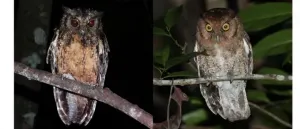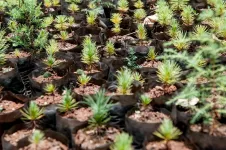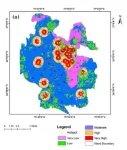Controlled scar formation in the brain
2021-03-26
(Press-News.org) When the brain suffers injury or infection, glial cells surrounding the affected site act to preserve the brain's sensitive nerve cells and prevent excessive damage. A team of researchers from Charité - Universitätsmedizin Berlin have been able to demonstrate the important role played by the reorganization of the structural and membrane elements of glial cells. The researchers' findings, which have been published in Nature Communications*, shed light on a new neuroprotective mechanism which the brain could use to actively control damage following neurological injury or disease.
The nervous system lacks the ability to regenerate nerve cells and is therefore particularly vulnerable to injury. Following brain injury or infection, various cells have to work together in a coordinated manner in order to limit damage and enable recovery. 'Astrocytes', the most common type of glial cell found in the central nervous system, play a key role in the protection of surrounding tissues. They form part of a defense mechanism known as 'reactive astrogliosis', which facilitates scar formation, thereby helping to contain inflammation and control tissue damage. Astrocytes can also ensure the survival of nerve cells located immediately adjacent to a site of tissue injury, thereby preserving the function of neuronal networks. The researchers were able to elucidate a new mechanism which explains what processes happen inside the astrocytes and how these are coordinated.
"We were able to show for the first time that the protein 'drebrin' controls astrogliosis," says study lead Prof. Dr. Britta Eickholt, Director of Charité's Institute of Biochemistry and Molecular Biology. "Astrocytes need drebrin in order to form scars and protect the surrounding tissue." By switching off the production of drebrin inside astrocytes, the researchers were able to study its role in brain injury in an animal model. They used electron microscopy and high-resolution light microscopy to investigate cellular changes in the brain, in addition to undertaking real-time investigations using isolated astrocytes in cell culture. "Loss of drebrin results in the suppression of normal astrocyte activation," explains Prof. Eickholt. She adds: "Instead of engaging in defensive reactions, these astrocytes suffer complete loss of function and abandon their cellular identity." Without protective scar formation, normally harmless injuries will spread, and more and more nerve cells will die.
To enable scar formation, drebrin controls the reorganization of the actin cytoskeleton, an internal scaffold responsible for maintaining astrocyte mechanical stability. By doing so, drebrin also induces the formation of long cylindrical membrane structures known as tubular endosomes, which are used in the uptake, sorting and redistribution of surface receptors and are needed for the defensive measures of astrocytes. Summing up the researchers' findings, Prof. Eickholt says: "Our findings also show how drebrin uses the dynamic and versatile cytoskeleton as well as membrane structures to control astrocyte functions which are fundamental to the defense mechanism against injury." She continues: "In particular, the membrane tubules which are formed during this process have not previously been described in this manner, neither in cultured astrocytes nor in the brain."
"Drebrin's role as a cytoskeletal regulator suggests that it may be a risk factor for severe outcomes in both neurological and other disorders, because loss of the protein can produce similar changes in astrocytes," says Prof. Eickholt. She adds: "It is also possible that individuals with defects in the drebrin gene - comparable to those in the animal model - might remain without symptoms until triggers like cellular stresses, environmental toxins or diseases occur." It is hoped that investigations involving patient samples will elucidate the extent to which drebrin also plays a role in degenerative brain disorders, such as Alzheimer's disease.
INFORMATION:
*Schiweck J et al. Drebrin controls scar formation and astrocyte reactivity upon traumatic brain injury by regulating membrane trafficking. Nat Commun (2021), doi: 10.1038/s41467-021-21662-x.
ELSE PRESS RELEASES FROM THIS DATE:
2021-03-26
An elusive whale species in the Southern Ocean could be resilient to near-future ecosystem changes, according to a new study by the universities of Exeter and Copenhagen.
Gray's beaked whales living in the deep oceans of the Southern Hemisphere are rarely seen alive and their ecology has remained a mystery to scientists until now.
The study used genome sequencing of 22 whales washed up on beaches in South Africa, Australia and New Zealand to investigate the history of the population over the past 1.1 million years.
Author of the study Dr Kirsten Thompson, of the University of Exeter, said: "The population approximately doubled about 250 thousand years ago, coinciding with a period of increased Southern Ocean productivity, sea surface temperature and a potential ...
2021-03-26
Nanowires are vital components for future nanoelectronics, sensors, and nanomedicine. To achieve the required complexity, it is necessary to control the position and growth of the metal chains on an atomic level. In the journal Angewandte Chemie, a research team has introduced a novel approach that generates precisely controlled, helical, palladium-DNA systems that mimic the organization of natural base pairs in a double-stranded DNA molecule.
A team from Europe and the USA led by Miguel A. Galindo has now developed an elegant method for producing individual, continuous chains of palladium ions. The process is based on self-organized assembly of a special palladium complex ...
2021-03-26
A new study analyzes the larval dispersal of nine fish species in the western Mediterranean and identifies three large areas in which there is barely fish exchange, so fish would remain in the same area all their life.
The study, published in the journal Progress in Oceanography, is led by experts of the Faculty of Biology of the University of Barcelona and the Biodiversity Research Institute (IRBio) of the UB, the Blanes Center for Advanced Studies (CEAB-CSIC), the Balearic Islands Coastal Observing and Forecasting System (ICTS - SOCIB), and the Mediterranean Institute for Advanced Studies (IMEDEA, CSIC-UIB).
The three identified areas are the Balearic Sea, the West Algerian Basin, and ...
2021-03-26
A new method makes it much easier to follow the progression of multiple myeloma, a form of blood cancer. With a single drop of blood, it is possible to very accurately show whether the number of cancerous cells in the bone marrow is increasing in a patient. In time, this blood test could potentially replace the current bone marrow puncture.
Researchers at Radboud university medical center, in collaboration with Erasmus MC, have taken an important step towards implementing this new diagnostic, with a study published in Clinical Chemistry. Multiple myeloma is a severe form ...
2021-03-26
Perovskites, a class of materials first reported in the early 19th century, were "re-discovered" in 2009 as a possible candidate for power generation via their use in solar cells. Since then, they have taken the photovoltaic (PV) research community by storm, reaching new record efficiencies at an unprecedented pace. This improvement has been so rapid that by 2021, barely more than a decade of research later, they are already achieving performance similar to conventional silicon devices. What makes perovskites especially promising is the manner in which they can be created. Where silicon-based devices are heavy and require high temperatures for fabrication, perovskite devices can be lightweight and formed with minimal energy investiture. It is this combination - high performance ...
2021-03-26
New study led by the University of Helsinki supports the recognition of new species of South American owls, two of them, Xingu Screech Owl and Alagoas Screech Owl, described for the first time.
In early 2021 two new species of screech owls are being described in a single publication as new to science. A multinational team involving researchers from the University of Helsinki, Brazil, and the USA published a detailed study focusing on the morphological, vocal, and genetic variation in a group of screech owls from the Amazon and Atlantic Forest regions of South America, called the Black-capped / Tawny- bellied Screech Owl complex (Megascops atricapilla - M. watsonii). The term "complex" describes ...
2021-03-26
Every year, 10 million hectares of forest are lost. Among efforts to revive degraded or deforested land is the Bonn Challenge, with a global goal to bring into restoration 350 million hectares by 2030. Yet such efforts neglect the nuanced but critical factor of bringing genetic diversity into restoration efforts for long-term success, which urgently needs to be addressed.
Integrating genetic diversity involves planting tree species with different genetic makeups and varied species adapted to local environments. If species are the same, they will not be able to reproduce or grow new seedlings. Christopher Kettle, an ecologist and geneticist at the Alliance of Bioversity International and the ...
2021-03-26
As COVID-19 vaccines slowly roll out across the world, government officials in densely populated countries must still manage vulnerable communities at highest risk of an outbreak.
In a new study published in the Journal Risk Analysis, researchers in India propose a COVID Risk Assessment and Mapping (CRAM) framework that results in a zoned map that officials can use to place more targeted restrictions on high-risk communities. Successfully used by officials in Jaipur at the peak of the pandemic last spring, their framework could help other vulnerable countries avoid a shutdown of their regional economies.
Led by Shruti Kanga, associate professor in the Centre for Climate Change and Water Research at Suresh ...
2021-03-26
An estimated 6 million Americans may suffer from peanut allergies. Tiny amounts of peanut protein can lead to hives, itching, tingling in the mouth, shortness of breath or nausea within minutes.
For individuals with severe peanut allergies, food-induced anaphylaxis can occur. It's a life-threatening emergency that requires treatment with an injection of epinephrine and a trip to the emergency room. Food labels offer warnings such as "may contain peanuts" or "was processed in a facility that may process nuts."
The warnings allow individuals with severe reactions to steer clear, but for consumers who may be able to tolerate a minimal amount of peanut protein without major incident the labels aren't very useful, says Lynne Haber, PhD, ...
2021-03-26
Women who suffer from vision, hearing or dual sensory loss are more than twice as likely to report depression and anxiety as men who experience the same issues, according to a new study by Anglia Ruskin University (ARU).
The research, which has been published in the International Journal of Geriatric Psychiatry, looked at survey data from more than 23,000 adults, where participants had self-reported whether they had suffered depression or anxiety, and also whether they experienced vision, hearing, or dual (both vision and hearing) sensory impairment.
Across the whole sample, the prevalence of depression ...
LAST 30 PRESS RELEASES:
[Press-News.org] Controlled scar formation in the brain






